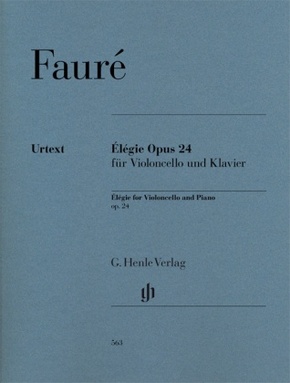Gabriel Fauré - Élégie op. 24 für Violoncello und Klavier - Besetzung: Violoncello und Klavier
| Verlag | Henle |
| Auflage | 2013 |
| Seiten | 12 |
| Format | 23,5 x 31,0 x 0,2 cm |
| Gewicht | 88 g |
| Reihe | G. Henle Urtext-Ausgabe |
| ISBN-13 | 9790201805634 |
| Bestell-Nr | 37990780BA |
_mit bezeichneter und unbezeichneter Streicherstimme
Es lag für Fauré auf der Hand, sich nach der begeisterten Aufnahme seiner ersten Violinsonate (HN 980) weiterhin der Kammermusik zu widmen. 1880 entstand ein kleines Stück für Cello und Klavier, das als langsamer Satz einer Sonate gedacht war. Das Sonatenprojekt gab Fauré dann aber auf, und brachte statt dessen das Stück unter dem Titel "Élégie" heraus. Der Erfolg war so groß, dass Fauré vom Verleger zu weiteren Stücken gedrängt wurde und der Dirigent Édouard Colonne 1895 eine Orchesterfassung der "Élégie" in Auftrag gab, die zwei Jahre später zur Uraufführung gelangte. Unsere Urtextausgabe enthält in gewohnter Weise sowohl eine bezeichnete als auch eine unbezeichnete Solostimme.
Inhaltsverzeichnis:
Élégie op. 24
_with marked and unmarked string part
Following the enthusiastic reception of his first Violin Sonata (HN 980), it was clear to Fauré that he would continue to write chamber music. In 1880 he wrote a little piece for cello and piano that was intended as the slow movement for a sonata.
However, Fauré gave up the sonata project, instead publishing the piece under the title "Élégie". It was so successful that Fauré was urged by the publisher to write further pieces. The conductor Édouard Colonne commissioned a version of the "Élégie" for orchestra in 1895, which was premièred two years later. As usual, our Urtext edition contains both a marked and an unmarked solo part.

